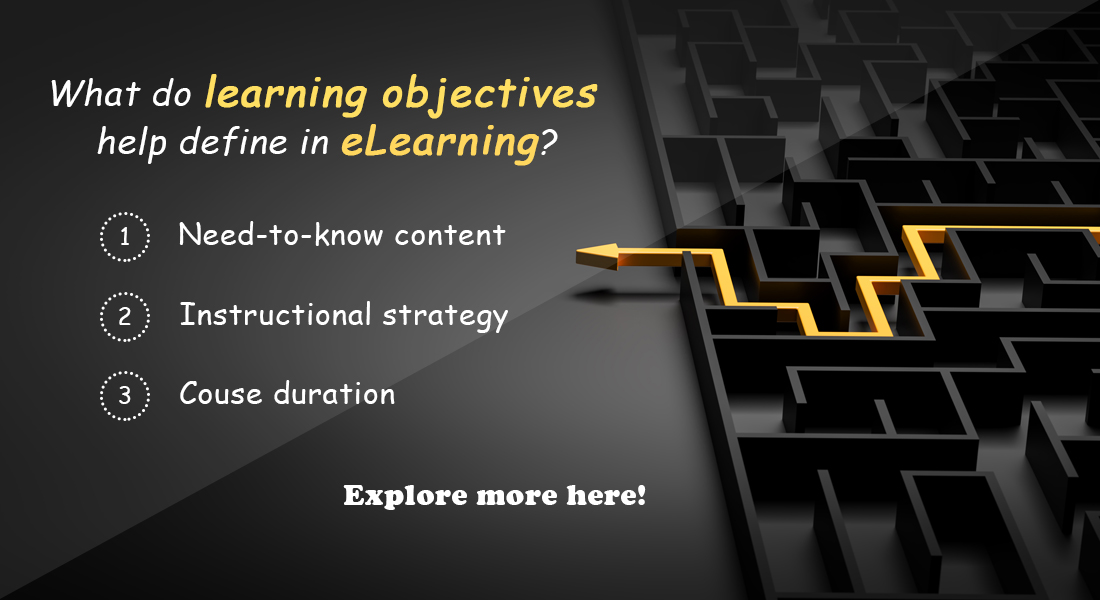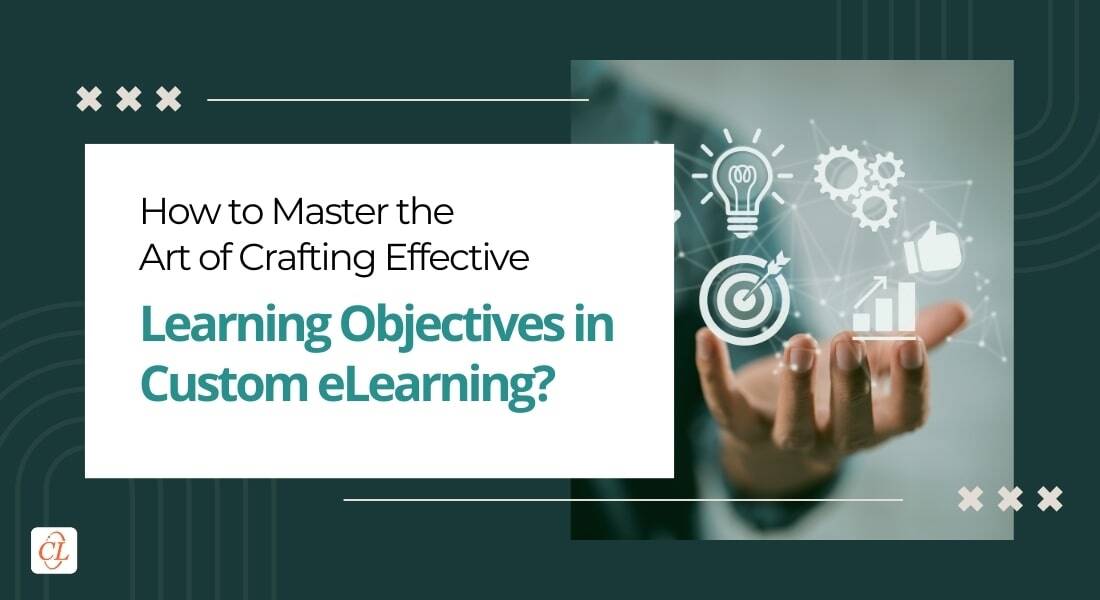Learning Objectives: The Key to E-learning Content, Instructional Strategy, & Assessments

What makes an e-learning course effective?
Beautiful design?

Engaging activities?

Achieving the objectives?

Yes, learners achieving the learning objectives is what matters, and makes the course effective. It also improves the bottom line by increasing training ROI.
Find out how rapid eLearning development helps you improve ROI!
So, are design and engaging activities not important? Of course, they are important. In fact, they are very important! But their goal should be to help the learner achieve the set learning objectives. And how can we ensure that? By making sure they are aligned with the learning objectives.
A good eLearning course will have the content, the instructional method, and assessments, all aligned with the predetermined learning objectives.
But before we go into how to do that, let’s talk a little about learning objectives.
Characteristics of Learning Objectives
To ensure they are all perfectly aligned, ask yourself:
- What part of the content is necessary for the learner to achieve the learning objectives? (Content)
- What kind of approach will help learners achieve the learning objectives? (Strategy)
- What kinds of tasks will reveal whether learners have achieved the learning objectives? (Assessments)
Learning Objectives
Learning Objectives are the key to content, strategy, and assessments in instructional design. It’s a statement, in specific and measurable terms that describes what the learner will be able to do at the end of the course. And like any good goal, learning objectives also need to be SMART.
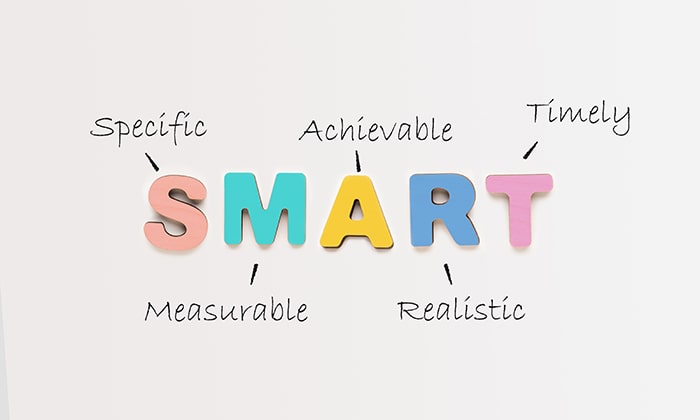
A good learning objective describes what the learner is expected to be able to Do (performance), the situation or environment in which the performance is expected to occur (condition), and the level of competence that must be reached or surpassed (criteria).
Example
An example of a learning objective with performance, condition, and criteria would be:
Using the given reference materials, learner should be able to correctly name every item on each of the twenty blueprints.
Before setting the learning objectives of the course, you need to ask yourself, “What do I want learners to know and achieve/attain when they complete this course?”
Always keep the learner in mind while framing learning objectives – what they should learn, their current level of knowledge and skill on the topic, any misconceptions they might have about it, etc.
So, once you’re done with the most important part – you have framed the learning objectives for the course. What next? The content, of course!
Learning Objectives and Content
Once we have devised specific, measurable, achievable, relevant, and timely learning objectives; we need to ensure that the content is also specific and relevant to the objectives of the course. If we don’t do that, there’s a danger that a lot of extraneous information (that in no way helps the learner achieve the learning objectives) will creep into the course.
How do we do that? First, don’t let yourself be overwhelmed by the vast number of materials you have on that topic.

Use instructional design principles to guide your decisions. Ask yourself, “What part of the content is essential for the learner to achieve the learning objectives?”
Keeping the learning objectives as a frame of reference, categorize all your learning material related to the topic into ‘need to know’ (essential to achieve the learning objectives) and ‘nice to know’ (more detailed explanations, examples, etc.). You might even find some material that is neither ‘need’ nor ‘nice to know’. You can just dump that!
All the ‘need to know’ content must be included in the e-learning. The ‘nice to know’ content may be given as a clickable to ensure extra reading or as resources at the end of the eLearning.
Aligning the content with learning objectives makes it more probable that learners will be provided opportunities to learn and practice the knowledge and skills that will be required to succeed in the assessments at the end of the course.
Learning Objectives and Instructional Strategy
An Instructional Strategy is a high-level approach to figure out how a subject or topic would be taught.
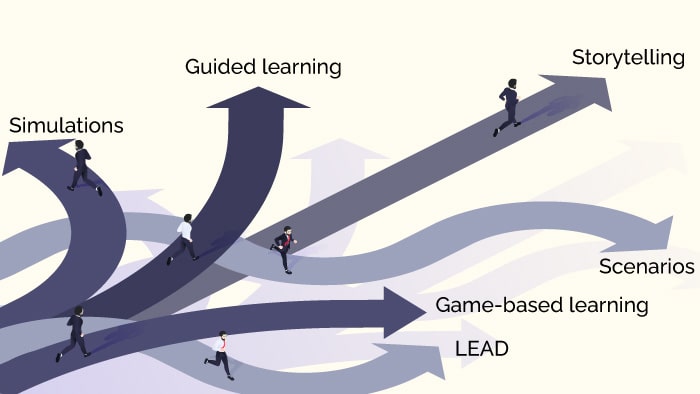
Keep your objectives in mind and ask yourself, “What kind of strategy will help my learners achieve the learning objectives?
And here’s something that’ll help you decide on the appropriate strategy.
| Strategy | Ideal for |
| Guided Learning |
|
| Scenario-based Learning |
|
| Learning through Exploration and Discovery (LEAD) |
|
| Game-based Learning |
|
| Simulations |
|
Learning Objectives and Assessments
A major reason why assessments should be directly linked to learning objectives is that when assessments and objectives are aligned, “good grades” are more likely to translate into “good learning”.
In eLearning, we generally use two types of assessments:
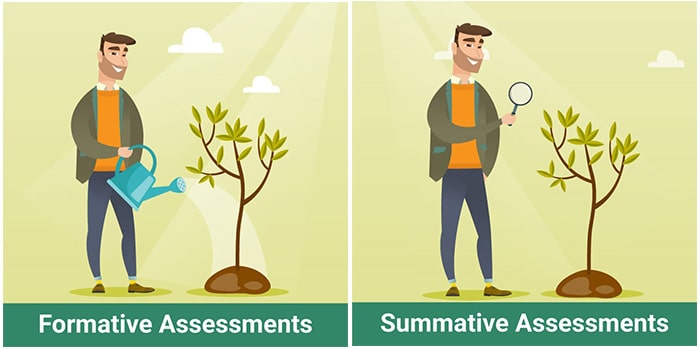
Formative assessments measure learners’ understanding during the course and help reinforce the learning.
Summative Assessments are usually administered at the end of a learning experience. They aid in determining whether the learner has achieved the stated objectives (i.e., what the individual should be able to do on the job). Results are often scored and tracked.
In what manner or format the assessments will be framed depends on factors such as – what the learning objectives are, how the learning content is being approached, and finally what are the learning activities that are weaved into the design process.
To align your assessments with the learning objectives, you need to ask yourself, “What kinds of tasks will reveal whether learners have achieved the set learning objectives?”
Remember, the intent is to create an assessment where the learner can show the desired performance – under realistic conditions – against appropriate criteria that are similar or akin to the actual job task, as much as possible. If the job task calls for listing something, the learner needs to be able to actually make a list. If learners are required to be able to ‘operate’ something, allow them to literally show that they can ‘operate’ it.
If the objective is for the learner to be able to log in to a computer system, don’t give them a multiple-choice question (MCQ) where they merely identify the proper procedure. They should be able to show that they can actually, log in to the system.
But MCQs may also be used in certain situations for a performance-based objective.
Here’s an example: If the objective is being able to “calculate,” you could provide optional answers to the problem. The learner should work out the problem (calculate) and arrive at the appropriate answer.
Just be careful that you are truly measuring the desired performance and not the learner’s memorization skills!
A few best practices when creating performance-based assessments:
- Try to approximate the actual job performance as closely as possible.
- Make the situations/scenarios/cases realistic and relevant to the job.
- Ensure feedback and reinforcement facilitate learning and enhance performance.
Final Thoughts
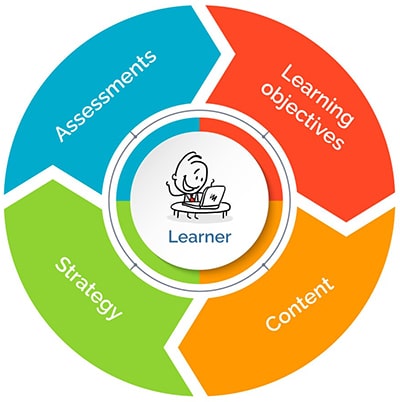
So that was all about how the content, instructional strategy, and assessments need to be aligned with the learning objectives for effective eLearning. But what’s that you see at the center of the cycle?
The learner of course! Never allow your focus to shift from the learner while framing the objectives, deciding on the content and strategy, or writing your assessments. This is because if the emphasis on the learner is lost, then everything is bound to be lost. No matter how beautifully designed the course is, how much important information it contains, and how complex the assessments, it’ll all be in vain if the course is not designed in a learner-centric manner.
If you are keen on enriching your instructional design strategies and be on the top of your game of generating engaging web-based learning resources, please don’t miss our eBook on Instructional Design Strategies to Design Engaging eLearning Courses. This will enable you to design learner-centric eLearning materials.



![Understanding the Importance of Learning Objectives in eLearning [SlideShare]](https://blog.commlabindia.com/hubfs/Imported_Blog_Media/learning-objectives-importance-eLearning-slideshare.jpg)
